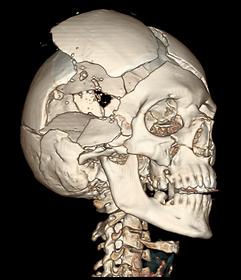Technologies
Virtopsy: the virtual autopsy
Multi-slice computed tomography (MSCT) and magnetic resonance imaging (MRI), when used with 3-D imaging technology, create vivid images of the interior of the human body. Dr. Richard Dirnhoter and Dr. Michael Thali and thier team of specialists at the University of Bern's Institute of Forensic Medicine, Switzerland are using these new imaging technologies to develop "Virtopsy"—a bloodless and minimally invasive "virtual autopsy" procedure to examine bodies for causes of death.
Virtopsy detects internal bleeding, bullet paths, and hidden fractures hard to find in a traditional autopsy. The MSCT and MRI aid in picturing fracture patterns, bone and missile fragmentation, brain contusion, 3-D bullet localization, gas embolism, and blood aspiration to the lung.
Unlike traditional autopsy, Virtopsy does not destroy human tissue. It can be used when religious beliefs prohibit, or families object to, the cutting open of the body. The developers of Virtopsy do not envision the procedure as a replacement for traditional autopsy but as a tool to be used in cases where dissection of the body is not feasible or where forensic evidence is particularly hard to visualize.
